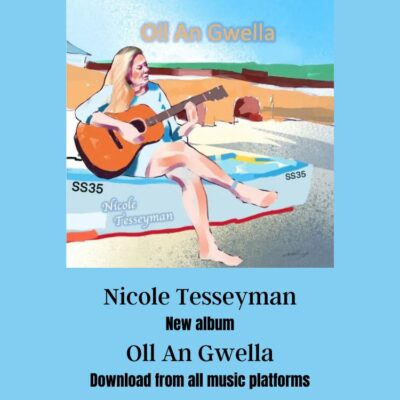A Moon With a View, a hugely ambitious solo exhibition that Arthur Lanyon has been working on for the past three years, is to open at Anima Mundi, St Ives, on 19th July.

The show includes his most monumental works to date, among them a panoramic 4 metre canvas.
Lanyon’s paintings combine intuitive figurative motifs with an emotive, gestural, abstracted language. His energetic works are sited on a physical and metaphysical crossroads, like a belay between numerous visual and emotional pinnacles. They offer a progressive link between the outside world, the inner architecture of the brain, altered states of consciousness, memory, and the unencumbered essence of child’s drawing.
Lanyon’s own insight into A Moon With a View
A boy draws a tree for the first time. It’s tall, no branches, just a trunk shooting up to a leafy looking cloud (all simple cartoons are the same). But he forgets what lives in trees: owls. Looking at the skinny trunk, he decides to put the owl hole out on the left — a free-floating circle. He thinks his drawing looks good. So he doesn’t screw it up. His dad Blue-tacks it up on the wall by the light switch.
The problem and solution to a lot of paintings is in the shape-shifting between background and foreground. In The Full Moon Over Water, by Turner, the painted waterscape represents the finite, and the moon — seemingly painted but actually bare background paper — is the infinite. The relationship between water and moon — and, in my son Rory’s drawing, between tree and owl hole — draws the viewer closer to the non-material, further into the mysteries.
My mood board is full of little drawings and photocopied things. Rory’s drawings are there, and also mine from when I was a boy. A childhood drawing can filter through your system like ‘Chinese whispers’ and come out as something new. Call it an unfamiliar knowing. Using a little pencil sketch is like consuming myself. It is strangely intimate because the nature of the mind seems to expand inwards to a place that cannot be found in the world of objects. A four-metre painting is also a type of mood board.
In my studio, a skeleton sits at a table, hunched over a copy of Gray’s Anatomy. A skeleton looking at skeletons. It looks like some serious self-enquiry has come to an end. The still-life of bones poses all sorts of abstract questions. They get answered simply with paint.
“A painting emerges when two opposite structures begin to contain and accept each other.”
I work in a polytunnel, under a thin sheet of polythene pulled tight over 12 thick metal hoops. Outside, heavy rain drum-rolls a roof that is like the rib-cage of a whale. Inside, drips form quietly before they drop. Between all the ribs is a sort of echo-chamber where I paint, wet-in-wet, with two brushes and both hands. How autonomous the motion feels.
It’s like flossing a nerve from each side or combing the centre parting of a scattered mind. It runs one way and then in reverse. You can switch what each hand is doing — one can mirror the other, or wait and watch as the other moves. I look at the skeleton, the book, the roof, and focus on the gap between things. Sometimes I forget to breathe because it seems I am holding my breath for something else.
A painting emerges when two opposite structures begin to contain and accept each other. It doesn’t always behave badly, like a goat and its tether (strung together in this sentence). It’s more of a marriage, like the roots of the Banyan tree, both pushing apart and holding together the stones of the temple of Angkor Wat. All manner of things materialise as the mind works to create equilibrium. The value of painting is that a good deal of thinking can gradually surface.
Rory’s drawing entered a painting. Out of the blue, a circle of bare canvas rests beside a vertical divide, a tree trunk, topped with a blob of autumnal tinged green. Owl wingbeats spread flight patterns through the air of the painting. It is called Moon with a View.
Moon With a View runs from 19th July until 31st August.



